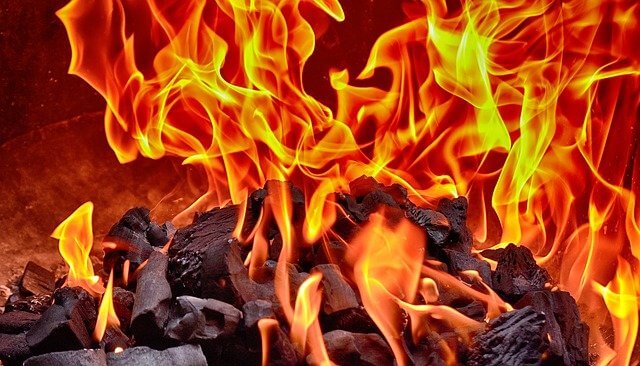What is heat, definition of heat as a form of enery? Properties of heat energy, information about effects of heat.

Source: pixabay.com
For many years scientists have wondered about the nature of heat. In the 18th- century some scientists proposed that heat was an invisible, weightless fluid called caloric. According to this theory, caloric soaked into an object when the object was heated and a drained away the when the object was cooled. It could flow from warmer objects to colder ones. This theory explained some of the things that people had observed about heat. For example, the heat from the flame of a burning candle will flow in to a metal bar which is held above the flame.
But this theory did not explain why the masses of substances did not change when they were heated or cooled. In 1798 experiments performed by Thompson showed that heat could not be a fluid, or any kind of matter. 40 years later, James Prescott Joule performed a series of experiments that showed that objects in motion produced heat. In fact, we are all famillar with this effect. For example, when you rub your hands together they warm up. Or, when you hammer a piece of metal, it gets hot.
At the same time scientists found that energy must be used to produce motion. Finally Joule concluded that heat is a form of energy. Other scientist working at this time had suggested that matter is made up of tiny pacticles called atoms and molecules. It was concluded that “heat is related to the motion of molecules or atoms, or heat itself is molecular motion”. Friction also produces heat energy. The work done to overcome the friction between surfaces appears as heat energy.
Heat energy causes the atoms or molecules of a substance to move faster and bump into each other more often. Therefore, the heat given to an object is stored in the motion of the molecules, and the kinetic energy of its molecules increases. On the other hand, when a substance loses heat, molecular motion becomes less and the kinetic energy of the molecules decreases. Since molecules are very small it is not possible to watch the changing of the speed of the molecules when an object is heated orcooled. But a simple experiment may give you an idea about the molecular motion when an object is heated or cooled.
EFFECTS OF HEAT
Heat may cause a change in the:
a- temperature of a body
b- size of a body
c- physical state of a body
d- chemical constitution of a body
e- electrical state of a body
Does Heat Energy Convert To Other Energy?
Heat can be converted to other forms of energy, such as mechanical work. The reverse also happens: Mechanical work can be converted into heat energy. Although there is a loss during these changes, the energy is not completely destroyed according to the principle of conservation of energy. The branch of science that deals with these changes is called thermodynamics.
Laws of Thermodynamics.
There are two main laws that thermodynamic phenomena obey.
- The amount of energy lost when converting heat energy to another type of energy is equal to the amount of energy lost in the opposite case, that is, when another energy is converted into heat energy.
- If no additional work is done, the heat does not pass from the environment it is in to a warmer environment on its own. This means that the temperature spontaneously moves from hot to cold. In order to transmit heat in the opposite direction, we need to do work with a separate energy.
Energy other than mechanical energy, such as electrical energy , chemical energy can also be converted into heat energy. The electric stove is one of the main examples of this.
Thermal Machines.
The main elements of thermodynamics are machines that convert heat into mechanical energy. These are called thermal machines. Steam engines, gasoline and diesel engines, steam turbines, gas turbines are the most important of these machines.